This page may contain one or more affiliate links, which means that if you purchase a product through that link, I may receive compensation. The links will be identified with the text "affiliate link". Click to learn more.
Thanks to a book called the Seduction of the Innocent, the Comics Code Authority was formed to prevent children from learning about drugs, violence or monsters. Since being formed in 1954, America now realizes how pointless the group had become and it is no longer in use. But was it really that bad to begin with? Let us take a look at some examples.
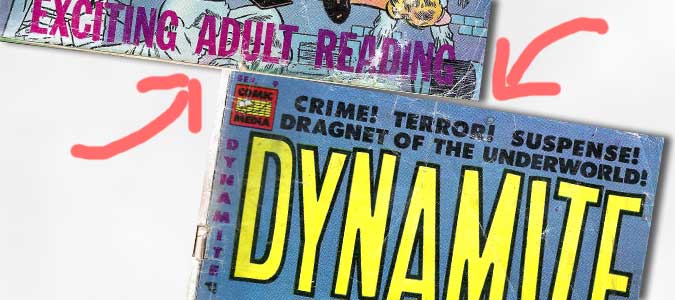
I came across a comic called Dynamite (Affiliate Link) issue 9, published September 1954, the same month as when the Comics Code Authority was established. So this was as close as it came. Basically a man who dishes out street justice (yet still works with the police) investigates the murder of a woman after witnessing her getting crushed by a car. Before I say anything more, I should point out that the cover clearly states “exciting adult reading” to make it clear that it was not intended for children. I should also mention that this comic is extremely shoddy in execution and compositions and color clashes that will make you wince.
So is there anything in this comic that would offend the Comics Code Authority? The main character gets himself beaten pretty bad, and it is described in detail. With all the paragraphs you have to read and the rows of boxes with drawings in them, this comic book is a real eye sore. There seems to be a lot of gun shooting, which is ironic because our anti-hero only has one eye, yet seems to have remarkable aim. There is a scene where a woman demands sex from the main character, having fallen in love with him in the thirty or so minutes that they have known each other.
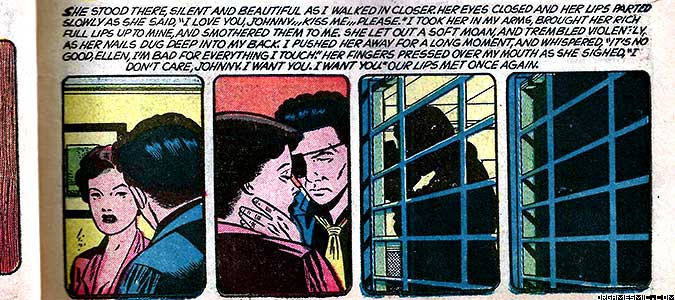
But perhaps the most objectionable area is the ending. Once the protagonist puts the pieces of the mystery together, he decides that the guilty culprit does not deserve to live. BLAM! Shoots him dead.
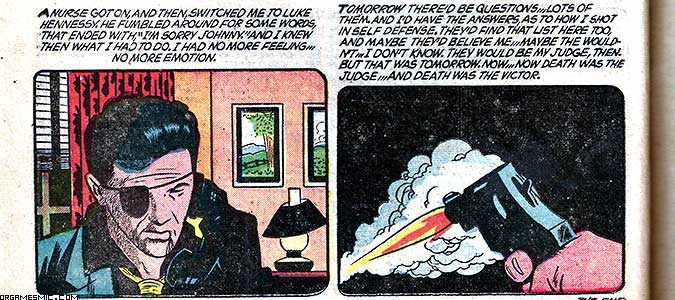
Even better than the stories, however, are the advertisements. Maybe there should have been a committee to prevent the ease of weapons falling into the hands of children. One ad called Sportsman’s Paradise allows you to order the following to your mailbox: cross-bows, slingshots, throwing knives, tomahawks, .22 caliber pistols, dueling swords, boomerangs and anything else a potential serial killer might need in their arsenal.
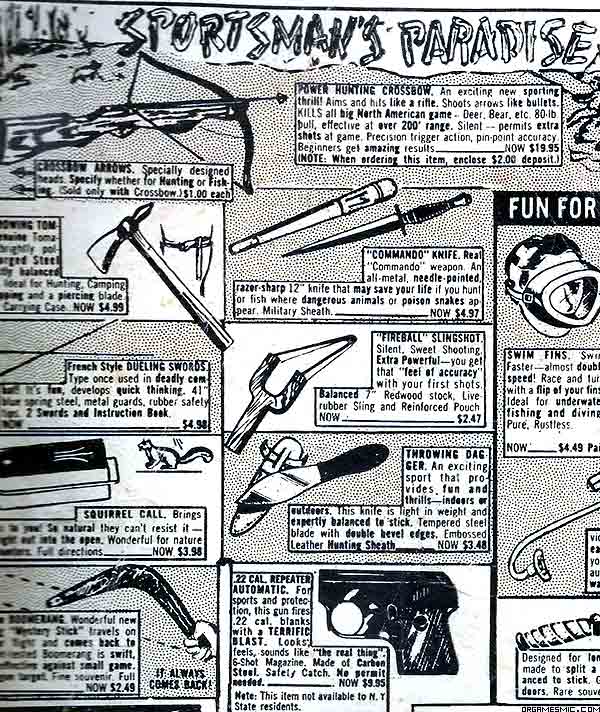
Disney Comics
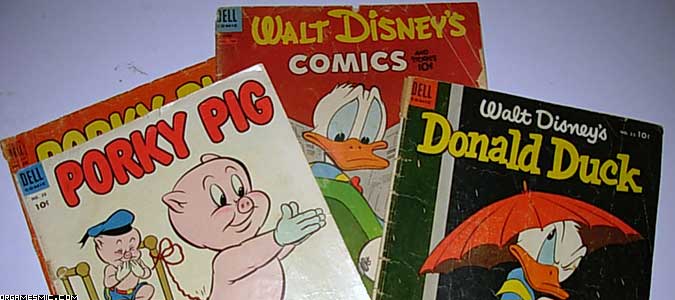
Long before and after the Comics Code Authority, Dell Publishing has been providing comics of Donald Duck and Porky pig. Needless to say, these were the innocent type of children’s stories that people thought of when they would hear about comic books.
Focusing on Porky Pig 28 (Affiliate Link) (published May-June 1953) there are cases of cartoon violence with knives and guns, but nothing to get in a twist about. Reading these older comics has bubbled nostalgia to the surface for me. I had forgotten the fun and hilarious appeal of cartoon violence. Now that we live in a politically correct time, so little as a lunchbox with Wonder Woman’s face is apparently too much exposure for a child.
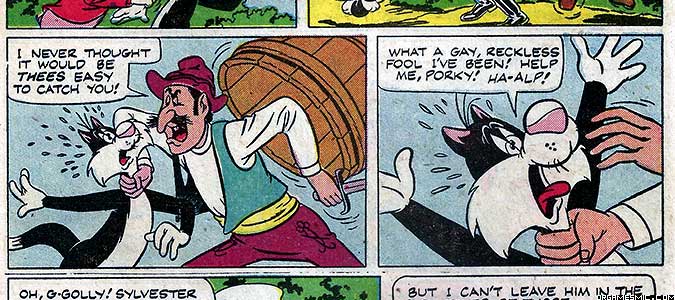
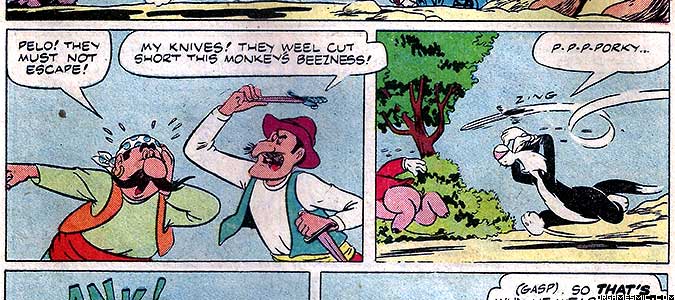
There really is not anything else to say, but it should be clear that relatively innocent comic books like this did exist while the CCA was being formed.
Educational Comics
How about we kick it old school and check out some World War 2 era comic books? Before EC was under attack under the name Entertaining Comics, it was prior called Educational Comics. Ironic, is it not?
The only comic I own (and thus the only example I can provide) is called Picture Stories From American History. It was published in 1946. It pretty much provides a sugar-coated version of virtually every significant American history story, including Pocahontas, The French and Indian war, and of course the revolution. There is no depiction of slaves, however there is an awful lot of war and genocide. I was especially amused with one panel having Native Americans being plowed down by a barrage of muskets.
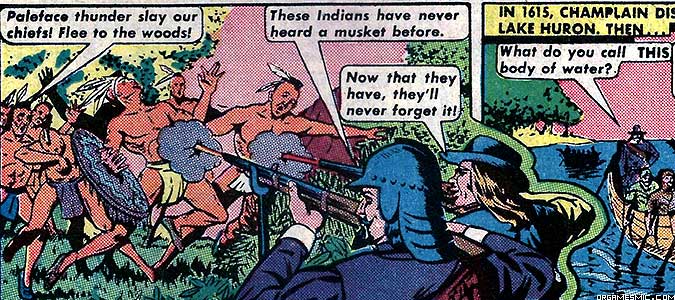
Even earlier than this, however, was True Comics number 18 (Affiliate Link) that also illustrated the story of America. It was printed in 1942, prior to the Comics Code Authority. But even more interesting was that it was distributed during the middle of World War 2. It should be obvious that this book has war stories and even shows how we responding to the attack on Pearl Harbor, complete with racism and exaggeration.
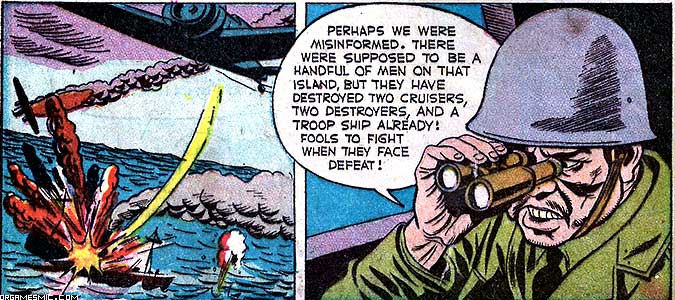
So as you can see, with all things considered, comics before the CCA were not that bad. Leave a comment with your opinion and keep the discussion going.
